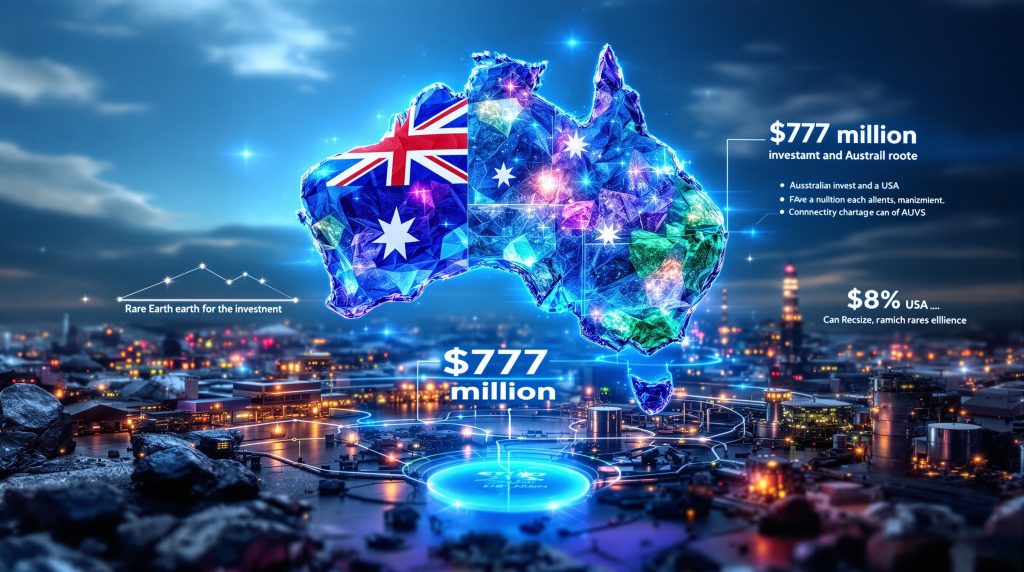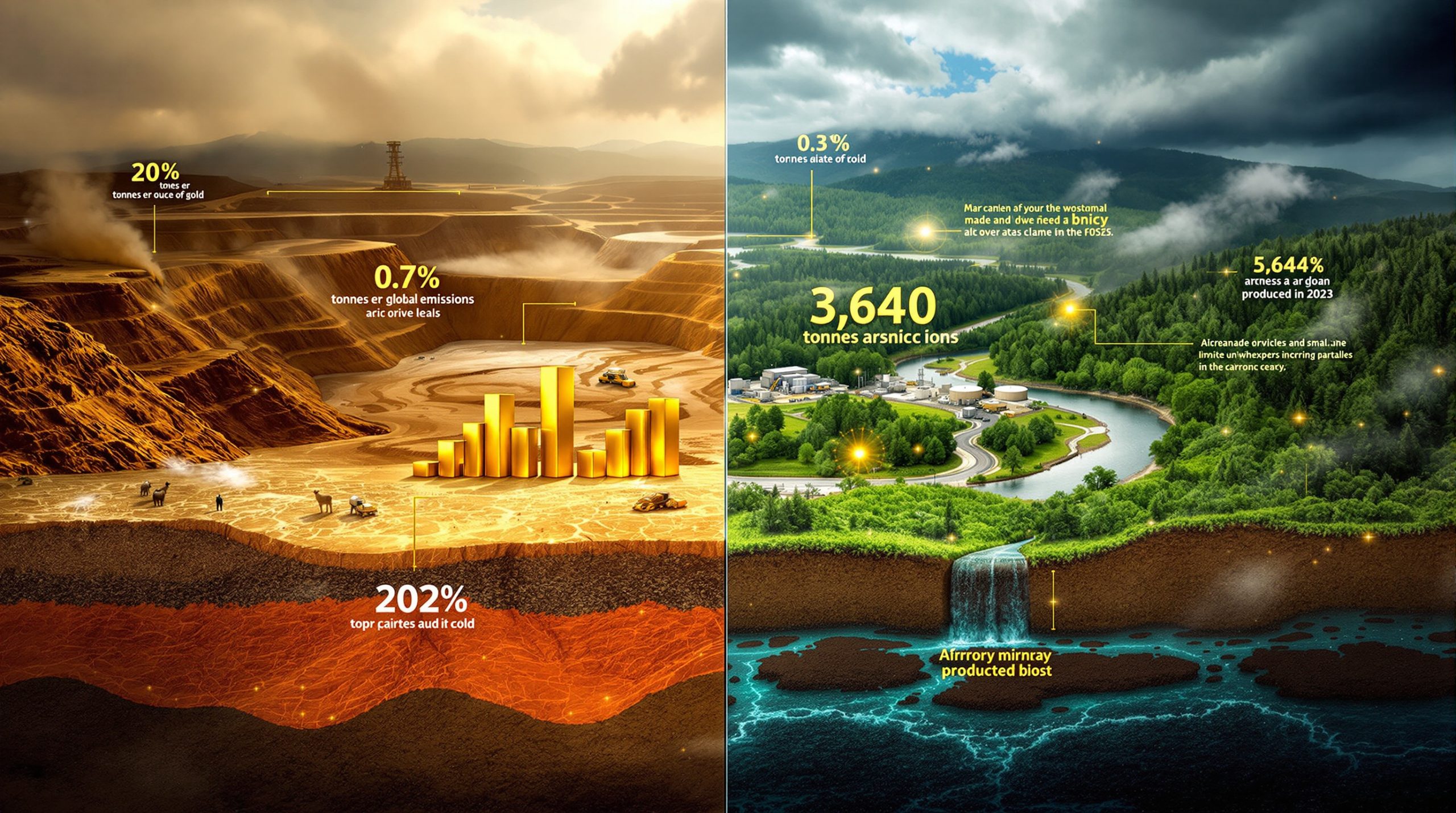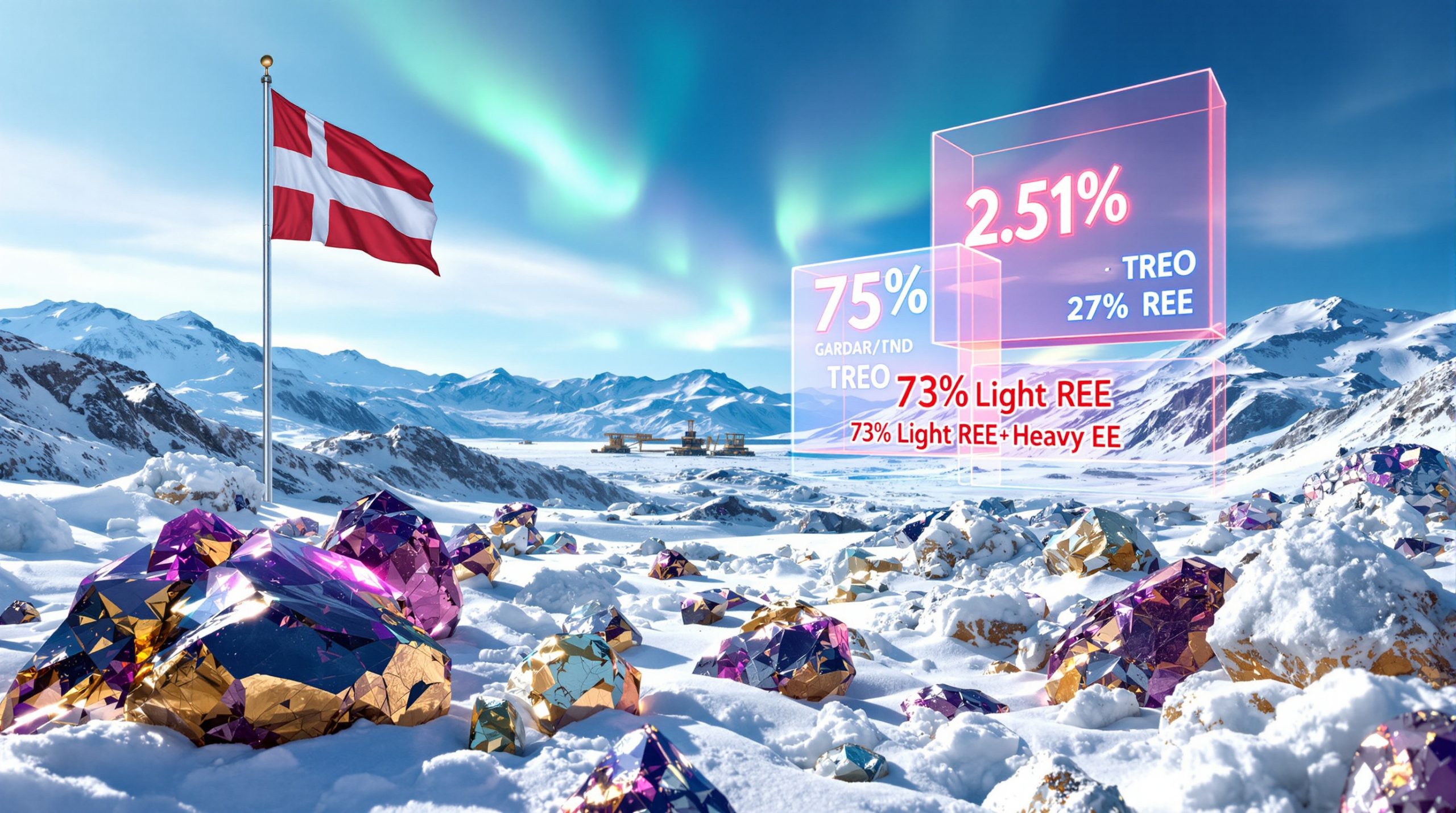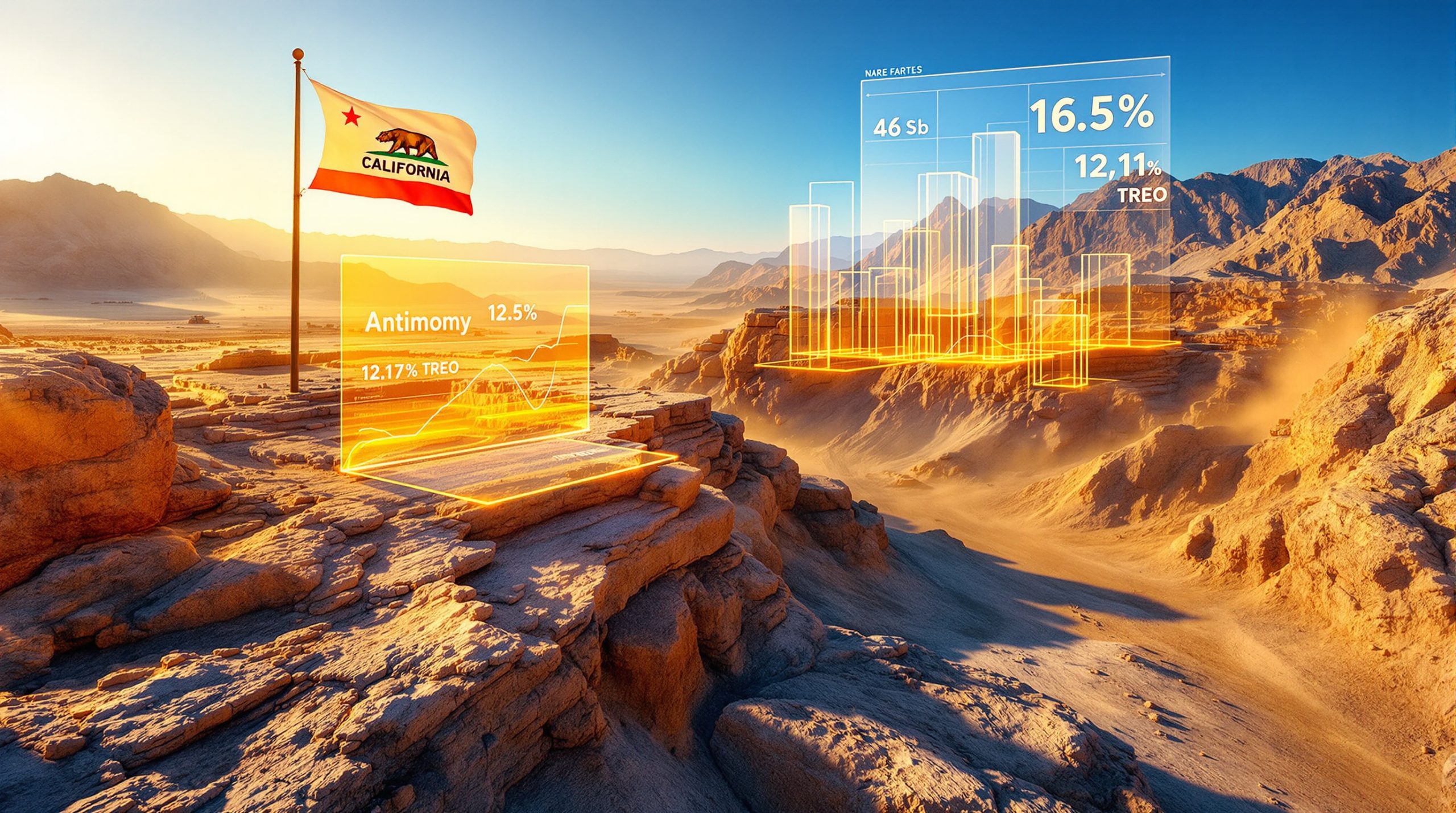Australia's Strategic Rare Earth Fund: Potential US Partnership Worth $777 Million
Australia is considering establishing a A$1.2 billion ($777 million) strategic minerals reserve focused on rare earth elements, potentially in partnership with the United States. This initiative represents one of Australia's most significant moves to secure critical minerals energy transition amid growing geopolitical tensions and China's dominance in the rare earth processing sector.
The Strategic Context of Australia's Rare Earth Fund
The proposed A$1.2 billion ($777 million) investment specifically targets rare earth projects as Australia positions itself to counter China's market control. With China processing approximately 85-90% of global rare earth elements despite holding only about 35% of known reserves, Australia's strategic fund aims to create a more resilient supply chain for these critical materials.
Australia's move follows China's December 2023 announcement of new export restrictions on rare earth smelting and separation technology, which built upon earlier controls implemented on gallium and germanium. These restrictions have heightened concerns among Western nations about supply security for materials essential to defense, renewable energy, and high-tech manufacturing.
According to the Minerals Council of Australia's 2024 Critical Minerals Strategy report: "Australia has a unique opportunity to become a significant supplier of processed critical minerals to allied nations, moving beyond our traditional role as a raw material exporter."
Key Policy Mechanisms Under Consideration
The Australian government is exploring multiple approaches to support its rare earth sector through this strategic fund, including:
-
Implementation of price floor guarantees for Australian rare earth producers, providing stability in historically volatile markets
-
Government-backed loans to support project development and expansion, addressing the high capital costs associated with rare earth mining and processing
-
Offtake agreements to ensure market stability for producers, potentially following models used in other commodity sectors
-
Direct investment in strategic Australian rare earth mining and processing projects to accelerate development timelines
These mechanisms build upon Australia's existing Critical Minerals Strategy 2023-2030, which had already allocated A$566 million to support critical minerals development, including A$200 million specifically for the Critical Minerals Development Program.
Why Are Rare Earth Elements Becoming a Geopolitical Focal Point?
The timing of Australia's proposed fund coincides with escalating trade tensions between major economies and growing recognition of rare earth elements as strategic resources essential for modern technology and defense applications.
Recent Developments in Global Rare Earth Politics
Global rare earth politics have intensified with new export controls and countermeasures by major powers. China's implementation of restrictions on rare earth exports has triggered responses from Western nations, including discussions at G7 meetings about establishing price floors and other protective measures for rare earth markets.
The United States Geological Survey's 2024 Mineral Commodity Summaries highlights America's vulnerability, noting: "The United States was 100% reliant on imports for its rare earth requirements in 2023, with China supplying 74% of rare earth compounds and metals imported."
This dependency has historical precedent. In 2010-2011, rare earth prices spiked dramatically following China's export quota reductions, with dysprosium oxide prices increasing from approximately $200/kg to over $2,000/kg within 18 months, demonstrating the market's vulnerability to supply disruptions.
Australia's Strategic Position in Rare Earth Markets
Australia holds approximately 4.2 million tonnes of rare earth oxide reserves, representing roughly 3.6% of global reserves. While this places Australia among the top countries globally for rare earth resources, the nation's processing capabilities remain limited compared to its mining potential.
Mount Weld in Western Australia contains one of the world's highest-grade rare earth deposits, with approximately 7.9% total rare earth oxides, making it a globally significant resource. However, Australia currently has minimal domestic rare earth separation capacity beyond pilot facilities.
The strategic minerals fund could transform Australia's position from primarily a raw materials exporter to a more integrated player in the rare earth value chain, with processing capabilities that would enhance both economic returns and strategic influence.
How Would the Australia-US Rare Earth Partnership Work?
The proposed collaboration between Australia and the United States would likely build upon existing critical minerals agreements while creating new mechanisms to support rare earth development specifically.
Potential Structure of the Australia-US Rare Earth Agreement
The Australia-US partnership could involve multiple complementary components:
-
Joint funding mechanisms for project development, potentially leveraging both countries' existing industrial policy frameworks
-
Shared technology for processing and separation, addressing Australia's current limitations in rare earth processing capacity
-
Coordinated strategic reserves of processed rare earth materials to buffer against supply disruptions
-
Reciprocal market access guarantees and preferential purchasing arrangements for defense and clean energy applications
This partnership would build upon the Australia-US Climate, Critical Minerals and Clean Energy Transformation Compact announced in May 2023 during the Quad Leaders Summit, which established the framework for critical minerals cooperation.
Government Consultations and Industry Engagement
The Australian government has initiated consultations with mining companies regarding potential contributions to the strategic minerals reserve. According to the Australian Minister for Trade and Tourism Don Farrell's statement in August 2024: "Our critical minerals partnership with the United States represents a strategic alignment of our economic and security interests, ensuring reliable supply chains for technologies essential to our shared future."
These consultations include assessment of existing rare earth projects that could benefit from the program and evaluation of processing technology requirements and investment needs. The partnership would need to address intellectual property and technology transfer for rare earth separation, as most advanced separation technologies remain closely guarded.
What Rare Earth Projects Could Benefit from the Strategic Fund?
Several Australian rare earth projects at various stages of development could potentially receive support from the proposed strategic fund.
Promising Australian Rare Earth Developments
Australia has multiple rare earth projects that could benefit from the strategic fund:
-
Nolans Project (Arafura Rare Earths): Located in the Northern Territory with Measured and Indicated Resources of 56 million tonnes at 2.6% total rare earth oxides and an estimated 30-year mine life. The project includes plans for an integrated processing facility for separation to rare earth oxides.
-
Mount Weld (Lynas Rare Earths): Western Australia's flagship rare earth mine with Proven and Probable Reserves of 21.7 million tonnes at 7.9% total rare earth oxides. Lynas currently processes this material at its Malaysian facility.
-
Browns Range (Northern Minerals): Currently Australia's only operating heavy rare earth mine, producing dysprosium-enriched concentrate. The deposit contains approximately 20-25% heavy rare earth oxides in its total rare earth content, significantly higher than typical bastnaesite deposits.
These projects represent different stages of development and could address various segments of the rare earth value chain with appropriate support.
Processing and Value-Added Opportunities
The strategic fund presents opportunities to develop Australia's processing capabilities:
-
Rare earth separation facilities to process mined materials domestically, requiring estimated capital investment of A$500-800 million per facility with 5,000 tonne annual capacity
-
Magnet manufacturing capabilities to capture more of the value chain, particularly for neodymium-iron-boron magnets used in electric vehicles and wind turbines
-
Metallurgical research and development for improved extraction techniques, particularly for challenging ore bodies
-
Recycling facilities to recover rare earths from end-of-life products, with CSIRO research indicating potential collection of 3,000-5,000 tonnes of magnet material annually in Australia
Lynas Rare Earths' Malaysian Advanced Materials Plant demonstrates the feasibility of rare earth processing outside China. The facility processes concentrate through cracking, leaching, solvent extraction and separation stages, producing separated rare earth oxides. The company reported processing 17,826 tonnes of rare earth oxides in fiscal year 2023.
How Does This Initiative Compare to Global Critical Mineral Strategies?
Australia's proposed rare earth fund represents part of a broader international response to supply chain vulnerabilities exposed in recent years.
International Benchmarking of Critical Mineral Initiatives
Several major economies have implemented strategies to address critical mineral security:
-
United States: The Inflation Reduction Act (2022) allocated $369 billion for clean energy and climate initiatives, including critical mineral supply chain development. The Defense Production Act Title III has invested approximately $750 million in critical mineral projects, including a $35 million award to Lynas Rare Earths USA to establish rare earth processing capacity in Texas.
-
European Union: The Critical Raw Materials Act (2023) establishes targets that by 2030, the EU aims to extract at least 10% of its annual consumption of strategic raw materials, process at least 40%, and recycle at least 25%. The European CRM facility launched with €1.2 billion in initial funding commitments.
-
Canada: Canada's Critical Minerals Strategy (2022) identified 31 critical minerals with C$3.8 billion in federal support over eight years, including tax incentives and research funding.
-
Japan: Japan maintains strategic stockpiles of rare earths managed by Japan Oil, Gas and Metals National Corporation (JOGMEC), with approximately 7,500 tonnes of rare earth stockpiles as of 2023, representing roughly 2 months of domestic consumption.
According to the OECD's 2024 report on critical minerals: "While multiple countries have announced critical minerals strategies, implementation remains uneven. Success factors include coordinated policy measures spanning exploration incentives, processing support, and demand-side policies such as procurement commitments."
Potential Impact on Global Rare Earth Markets
Australia's strategic fund could influence global rare earth markets in several ways:
-
Creation of price stability in historically volatile markets through price floor mechanisms
-
Development of alternative supply chains outside of dominant producers, reducing concentration risk
-
Potential for more transparent pricing and trading mechanisms as Western-aligned supply increases
-
Gradual rebalancing of processing capabilities across multiple countries, particularly for heavy rare earths
The International Energy Agency's 2024 analysis notes: "Fragmentation of critical mineral support programs across multiple countries risks creating redundant capacity in some segments while leaving gaps in others, particularly in midstream processing where scale economies are significant."
What Challenges Face Australia's Rare Earth Ambitions?
Despite the strategic importance and financial commitment, Australia's rare earth development plans face several significant hurdles.
Technical and Economic Obstacles
Developing a competitive rare earth industry involves overcoming substantial technical challenges:
-
Complex metallurgy and separation requirements for rare earth processing, with rare earth separation requiring multi-stage solvent extraction processes typically involving 8-12 separation stages to achieve 99.5%+ purity levels required for magnet applications
-
High capital costs for establishing processing facilities, with separation plants requiring $200-400 million investment for facilities of economic scale
-
Environmental management challenges in extraction and processing, particularly regarding radioactive thorium and uranium often associated with rare earth deposits
-
Competition with established producers with lower operating costs due to economies of scale and regulatory advantages
These technical challenges are particularly acute for heavy rare earth elements like dysprosium and terbium, which face the most acute supply constraints relative to demand but are also more metallurgically challenging to process.
Market and Geopolitical Considerations
The strategic fund must navigate complex market dynamics:
-
Risk of retaliatory measures from existing dominant suppliers that could undermine new projects
-
Uncertainty about long-term pricing in government-supported markets and potential market distortions
-
Challenges in coordinating allied approaches to critical mineral security across multiple countries
-
Balancing commercial viability with strategic imperatives, particularly for projects that may not be economically competitive without support
Price floor guarantees have precedent in agricultural commodities and renewable energy feed-in tariffs. For critical minerals, implementation could follow models such as Contracts for Difference (where government pays the difference when market price falls below agreed floor), put options giving producers the right to sell to government at floor price, or direct production subsidies when prices fall below threshold levels.
How Might This Initiative Reshape Australia's Resource Sector?
The strategic minerals reserve and rare earth focus could significantly impact Australia's mining industry structure and priorities.
Potential Industry Transformation
The strategic fund could catalyze structural changes in Australia's resource sector:
-
Accelerated development of previously marginal rare earth projects that become viable with government support
-
Greater integration between mining operations and downstream processing, reversing Australia's traditional focus on raw material exports
-
Increased research and development in rare earth extraction and separation technologies, building domestic expertise
-
Development of specialized workforce capabilities in critical minerals processing and advanced materials
The rare earth sector requires specialized skills in metallurgy, separation chemistry, and materials science that are currently limited in Australia. Investment in these capabilities could create high-value technical jobs beyond traditional mining roles.
Economic and Regional Development Implications
The strategic minerals initiative presents opportunities for regional economic development:
-
Creation of high-value jobs in processing and manufacturing, particularly in regions with existing mining infrastructure
-
Regional development opportunities in areas with rare earth resources, including Western Australia, Northern Territory, and potentially other states
-
Diversification of Australia's resource export profile beyond traditional bulk commodities
-
Enhanced position in global technology supply chains, particularly for clean energy and defense applications
By developing domestic rare earth processing capabilities, Australia could capture significantly more value from its mineral resources. The processing of rare earth concentrates into separated oxides typically adds 3-5 times the value compared to concentrate exports, while further downstream processing into metals and magnets can multiply value by 10-20 times.
FAQ: Australia's Rare Earth Strategy
What are rare earth elements and why are they important?
Rare earth elements comprise 17 metallic elements essential for numerous high-technology applications including permanent magnets, catalysts, batteries, and defense systems. Despite their name, most are relatively abundant in Earth's crust but rarely concentrated in economically viable deposits. Their importance stems from their unique properties that enable miniaturization, efficiency, and performance in modern technologies.
The F-35 Lightning II fighter aircraft contains approximately 417 kg of rare earth materials per unit, while Virginia-class submarines require approximately 4.2 tonnes of rare earth permanent magnets. In renewable energy, a single 3-MW direct-drive wind turbine requires approximately 600 kg of rare earth permanent magnets.
Why is Australia pursuing a rare earth partnership with the US?
Australia aims to leverage its geological resources while addressing processing limitations through partnership with the US, which has both technological expertise and market demand. The collaboration helps both countries reduce dependence on dominant suppliers while strengthening allied resource security in a strategically important sector.
The US Department of Defense has already demonstrated commitment to rare earth supply chain development through investments under the Defense Production Act, including $35 million awarded to Lynas Rare Earths USA to establish rare earth processing capacity in Texas.
How does China currently dominate the rare earth market?
China controls approximately 70% of global rare earth mining production and 85-90% of rare earth processing capacity despite having roughly 35% of known reserves. This dominance developed through decades of strategic investment, environmental regulatory advantages, and integration of mining with processing. Recent export controls have highlighted this market concentration as a supply chain vulnerability.
China's rare earth strategy has evolved from primarily exporting raw materials to emphasizing value-added processing and manufacturing of end-use products like magnets. The country has consolidated its domestic industry into larger state-controlled entities to improve efficiency and environmental compliance while maintaining strategic control.
What timeline is expected for Australia's rare earth fund implementation?
While specific timelines haven't been publicly confirmed, the departmental briefs suggest the government is actively consulting with industry stakeholders. Implementation would likely follow a phased approach with initial funding announcements possible within months, followed by project selection and development spanning several years.
Establishing new rare earth processing capacity typically requires 3-5 years from investment decision to operational status, with further time needed for optimization and scaling. The most advanced Australian projects could potentially receive initial support within 6-12 months if the fund proceeds as proposed.
Strategic Implications of Australia's Rare Earth Ambitions
Australia's consideration of a $777 million rare earth fund represents a significant big pivot minerals strategy in its resource approach, emphasizing value-added processing and strategic alignment with allies over traditional bulk commodity exports. The initiative reflects growing recognition that critical minerals security requires coordinated policy approaches spanning investment, technology development, and international partnerships.
If successfully implemented, the fund could accelerate Australia's position in global rare earth supply chains while providing Western economies with more diverse sourcing options. However, the technical challenges, market uncertainties, and geopolitical complexities surrounding rare earth elements suggest that building truly resilient supply chains will require sustained commitment beyond initial investments.
The proposed partnership with the United States indicates that critical minerals have moved beyond purely commercial considerations to become central elements of international strategic alignment, resource security, and industrial policy in an increasingly fragmented global economy. Furthermore, this aligns with Australia's recently announced defence-critical materials strategy and may complement the Trump executive order on minerals if implemented in the United States.
Disclaimer: This article contains speculative content regarding potential future government policies and market developments. Actual implementation may differ from the scenarios described. Readers should conduct their own research before making investment or business decisions related to the rare earth sector.
Ready to Invest in the Next Major Mineral Discovery?
Discovery Alert's proprietary Discovery IQ model instantly notifies investors of significant ASX mineral discoveries, turning complex data into actionable insights with real-time alerts. Understand why major mineral discoveries can lead to substantial market returns by exploring Discovery Alert's dedicated discoveries page, showcasing historic examples of exceptional outcomes.




